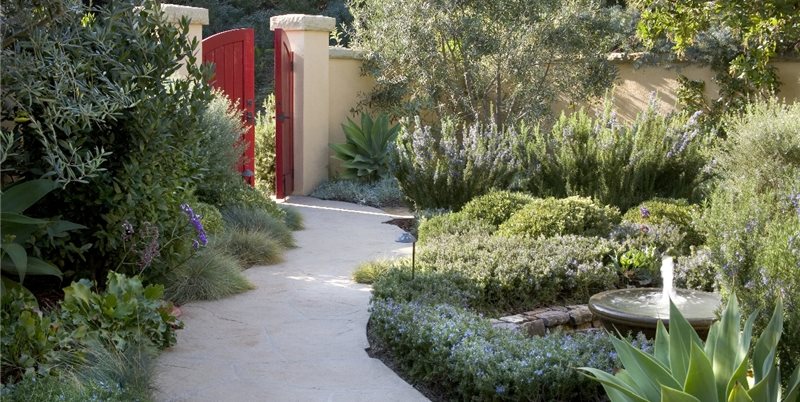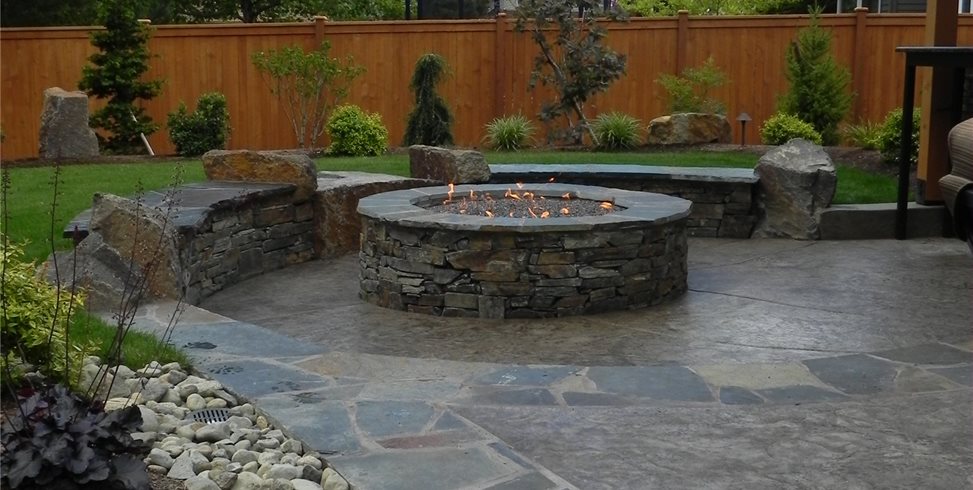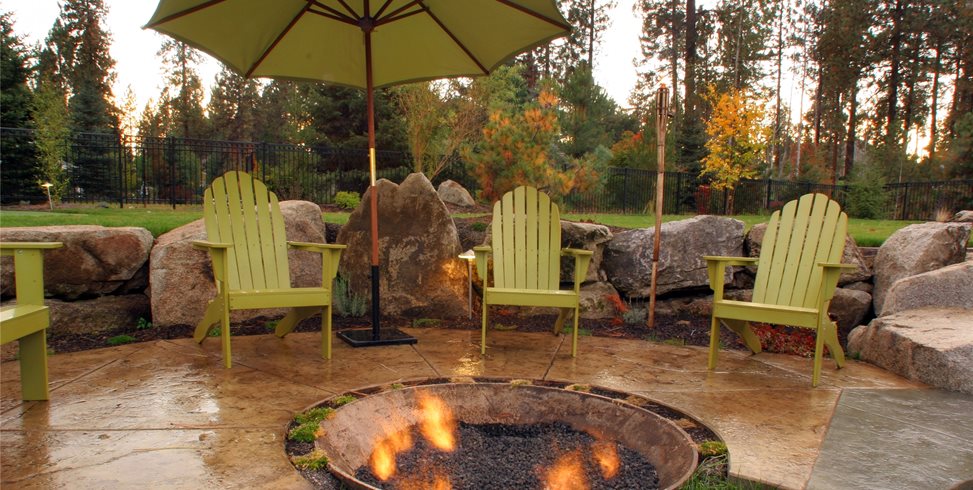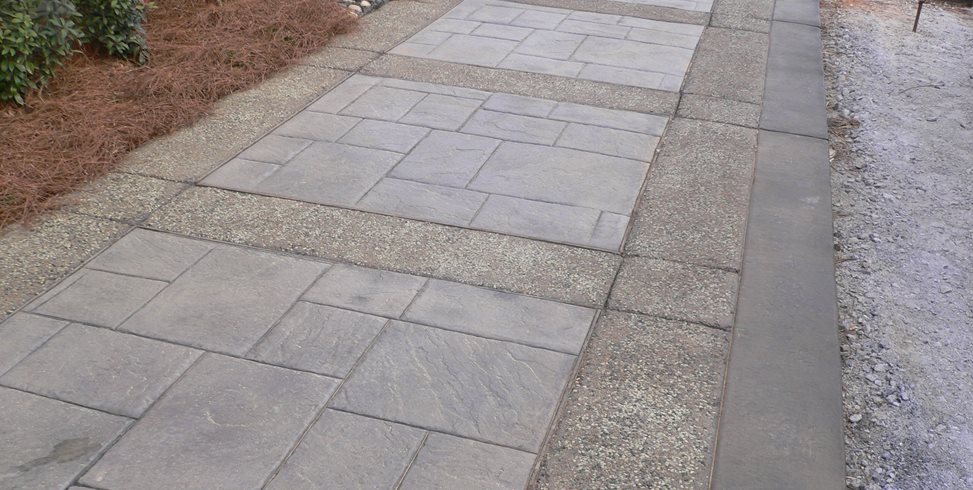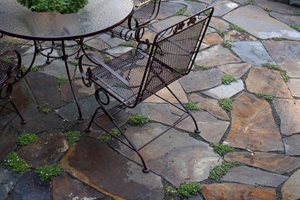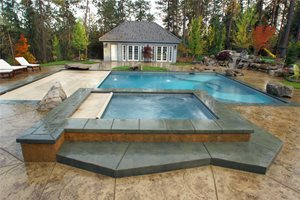Stamped Concrete Made to Look Like Stone
How to get the look of flagstone at a fraction of the priceWhich is better, stamped concrete or flagstone? This debate rages across online home improvement forums without a clear winner. The main concerns are appearance, cracks, slipperiness and of course budget. Since both materials have their advantages and disadvantages, for many homeowners it comes down to preference.
Does it really look like stone?
When it comes to appearance, purists prefer natural flagstone patios and walkways. However, you’ll be surprised to find that stamped concrete is a versatile material that can mimic many different types of stone quite well. Only the most experienced eye will even notice that it’s not real stone. Stamp patterns are available in a variety of sizes, shapes and textures so that you can recreate the look of popular stone types. You’ll have a choice of irregular stone patterns or the more formal cut stone patterns. Popular stamps include ashlar slate and sandstone. Furthermore, concrete can be colored using a variety of methods to get the same earthy tones exhibited in stone. Coloring agents can be mixed into the concrete mix, applied to the surface or added to the sealer. A skilled decorative concrete installer can blend custom colors based off of stone on your home or in other parts of your yard.Will it crack?
Cracks are always a concern when installing a new patio or path, especially for those living in an area that is subject to extreme freeze-thaw conditions or frequent earthquakes. Both flagstone and concrete have been known to crack. Proper installation of either material will help you avoid this problem. With stamped concrete in particular, control joints are the answer. These are joints cut across the patio or walkway that allow for movement without resulting in random, unsightly cracks. These joints may be the most obvious sign that your patio is in fact concrete, not natural stone. However, doing away with them, or having too few joints would increase the risk of the concrete cracking and becoming uneven.Is it slippery?
It is important that paving have good traction when it is wet. Certain types of stone, such as slate, can be quite slick when wet. On the other hand, stamped concrete has a rough texture that is less prone to slipping. Also, a sealer with an anti-slip additive can be applied to the concrete for even more traction. If you live in a rainy or damp climate these are important considerations. Try increasing your awareness of your footing on stone and concrete pavements, to see which you feel more stable on before making your decision.How much will it cost?
For many homeowners, budget is the factor that tips the scales heavily in the favor of stamped concrete. Laying stone will cost around $30 per square foot, while pouring, stamping and coloring concrete will cost around $15 per square foot. That means the overall cost for a concrete patio or walkway could be half that of flagstone. On larger projects, this will be a considerable amount of money.One reason why laying stone is so much more expensive is because it is a labor intensive process. A stone mason must lay every piece by hand, determining as he goes which pieces fit together best. Stamped concrete is poured all at one time and then stamped with large mats that expedite the process. With stone, cuts will also need to be made to create the desired edge, whether it is straight or curved. The more complicated the edges are, the more cuts required, which means more labor and higher costs. Luckily, with stamped concrete the edges are not a challenge. The concrete can be formed and poured to create whatever shape you desire. With stamped concrete, there’s no cutting and no wasting of excess materials.
So if you love the look of stone, but the price of gives you sticker shock, stamped concrete is an affordable way to recreate the same look. Keep in mind that no material is without its advantages and disadvantages. The best thing to do is make sure your concrete is installed and maintained properly and it will last for many years.

 Backyards
Backyards
 Front Yards
Front Yards
